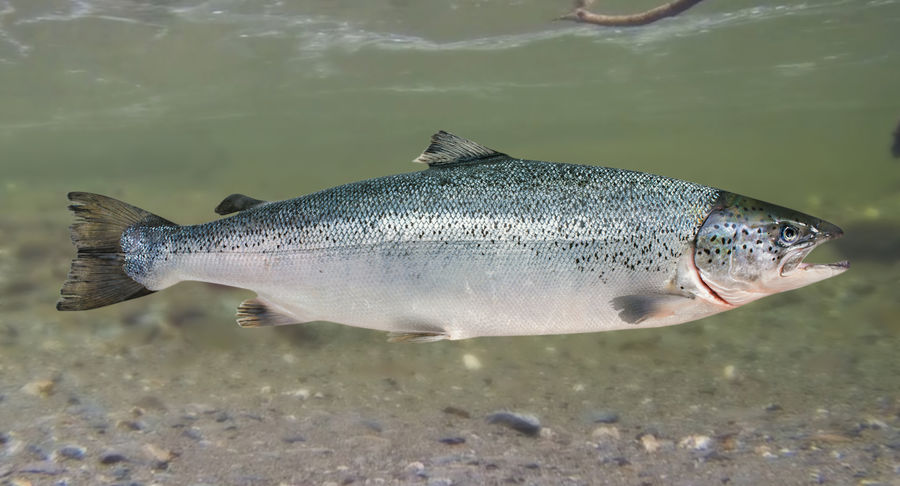What do you feed a baby garter snake
How to Care for Your Garter Snake
Common garter snakes (Thamnophis sirtalis) are small snakes found throughout North America. These highly active snakes need a substantial habitat relative to their size, though they have relatively low maintenance needs.
Being among the most harmless of the world’s snakes, it’s easy to see why garter snakes have slithered their way to being incredibly popular pets.
Size, Lifespan and Availability
A healthy garter snake is alert and active with regular eating habits, bright, clear eyes and is routinely shedding its skin in one piece. Baby snakes are about six to eight inches long, but they can grow up to 22 to 54 inches in length.
Wild garter snakes usually live only four or five years, but a well-cared-for snake can live for over 10 years. We don’t advise buying a wild-born garter snake, as they are shy of people and may never acclimate to living as pets. Catching wild snakes to keep as pets can also be illegal.
Garter snakes are available at pet stores, online, reptile expos and breeders. Talk with your local pet store or breeder to determine whether a snake you are interested in is wild-born or not.
Garter Snake Caging
To allow for proper exercise and comfort, the total width and length of your snake’s tank should be longer than the snake itself. If the tank is too small, your snake won’t have room to move. If it’s too large, your snake might feel exposed and become stressed.
A five-gallon tank should work for baby garter snakes. Adult males will be happier in a 15-gallon tank while adult females or breeding pairs should have a 25-gallon tank or larger. Two garter snakes can comfortably share a terrarium, although they may accidentally hurt each other if they try to hunt the same piece of food.
Please note that garter snakes are small, and any space that they can squeeze their head through is large enough for them to wriggle through. Keep the tank escape-proof by making sure the lids are securely attached to the tank and that there are no gaps within the walls.
Food and Water
Garter snakes benefit from a varied diet to ensure proper nutrition. Juvenile snakes can eat a combination of feeder guppies, minnows, earthworms and fish fillet pieces; feed the juvenile snakes every other day.
Mature snakes should eat small rodents, such as mice or pinkies, but they only need food once a week. Avoid feeding your snake live mice to prevent any injuries to the snake. When using frozen rodents, let them defrost at room temperature. Avoid direct heating sources, such as microwaves, as they can cause the rodent to burst. You may also place small goldfish in your snake’s water bowl.
Garter snakes are semi-aquatic, meaning they need water for swimming and drinking. Keep a large bowl of clean, chlorine-free water so the snake can soak itself. Change this water daily.
Lighting and Temperature
An important part of your garter snake’s home is the temperature. Set up a temperature gradient in the tank with a cooler end at 75 degrees Fahrenheit and a warmer end at 85 degrees. Give your snake a basking area of 95 degrees. Warm rocks in the tank make excellent places for your garter snake to curl up. A heat gradient and basking area help mimic the temperature changes that a snake would naturally experience and will help them digest their food.
Give your snake a basking area of 95 degrees. Warm rocks in the tank make excellent places for your garter snake to curl up. A heat gradient and basking area help mimic the temperature changes that a snake would naturally experience and will help them digest their food.
Keep the lights on for eight to 12 hours during the day. A heat lamp is necessary, as it provides a properly warm and comfortable environment for your garter snake. However, keep in mind that heat rocks can burn the snake’s skin and should be avoided. At night, you can use infrared or nocturnal lights.
If you can control the humidity of the terrarium, keep is between 40 to 60% and slightly higher when the snake is shedding.
Garter Snake Substrate
Substrate offers not just a crawling surface but also a place for your snake to burrow when they need the need to hide. Use a deep substrate, such as coconut fiber bedding, sphagnum moss or reptile bark. Keep the substrate dry to prevent sores or skin blisters from forming. Shredded paper goods, such as paper towels, newspapers or readily available recycled paper products, will also suffice to keep your pet snake healthy.
Shredded paper goods, such as paper towels, newspapers or readily available recycled paper products, will also suffice to keep your pet snake healthy.
To help your snake feel safer, provide small climbing toys and foliage for exercise and hiding spots.
Soiled bedding should be spot-cleaned daily. Thoroughly disinfect the tank and furnishings once a week by scrubbing with a 3% bleach solution and rinsing with water until the bleach smell is gone. Dry the tank and furnishings and add fresh substrate.
Garter Snake Handling and Temperament
Once you establish a home where your garter snake is sheltered, well-fed, hydrated and kept at a well-regulated temperature, it’s now time to get to know your pet.
Most captive-bred snakes have gentle dispositions and don’t mind being handled. Let your friend slithery on your hand and get used to you before picking it up. Approach your snake from the side rather than grabbing from the top so it doesn’t feel threatened.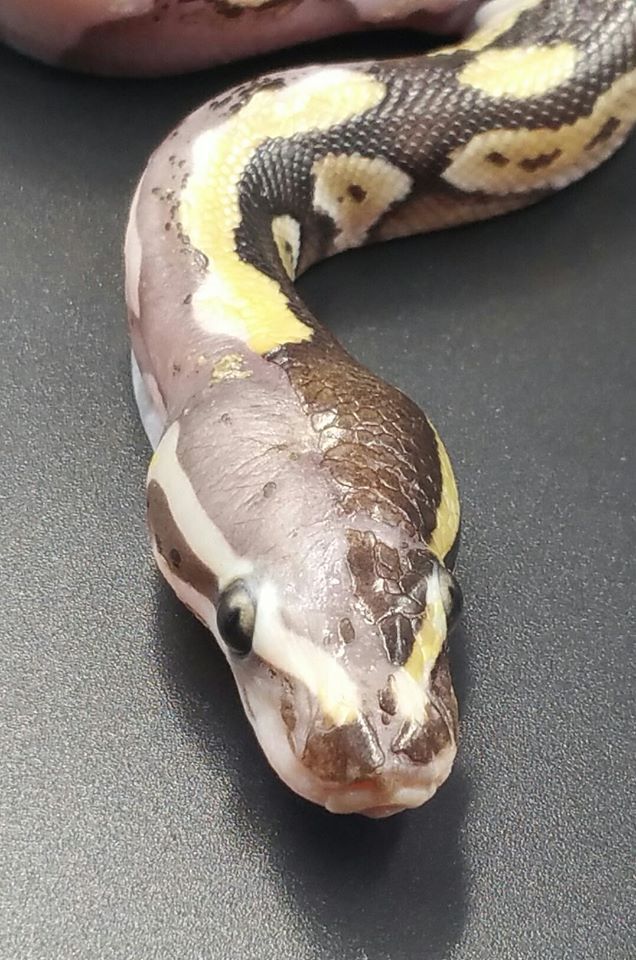 Garter snakes need support while being held since they don’t have the strength that constrictors possess.
Garter snakes need support while being held since they don’t have the strength that constrictors possess.
Occasionally, garter snakes may have a snappish disposition and may try to defend themselves with a nip or spraying musk. However, most snakes soon calm down with frequent, gentle handling. Musk is not harmful and is easily washed off.
Feeding - Gartersnake.info
This page explains what to feed pet garter snakes; what not to feed them; how much they should be fed and how often, how to do it, and what to do when a garter snake won’t eat.
It is organized into the following subsections:
- What to Feed
- Frogs and Toads
- Earthworms
- Fish
- Mice
- Other Food
- What They Won’t Eat
- Supplements
- Commercial Diets
- How Much and How Often
- How to Do It
- Problem Feeders
Introduction
“What should I feed it?”
That’s easily the most common question asked by beginning garter snake keepers. It’s also the most important, because garter snake diets are tricky, and feeding your snake the wrong kind of food can have serious — even fatal — consequences.
It’s also the most important, because garter snake diets are tricky, and feeding your snake the wrong kind of food can have serious — even fatal — consequences.
It’s also a question that frequently gets a lot of wrong answers, from pet store workers who insist that they eat crickets, to hobbyists who get confused about which fish have a potentially dangerous enzyme, and which don’t. That confusion can frighten a beginning garter snake keeper into believing that even one mistake can have dire results.
Fortunately, even the most serious problems can be avoided with a little knowledge. A garter snake’s diet does not have to be a cause for concern, as long as you know the pros and cons of each food item. That’s what you’ll learn on this page.
What to Feed
Unless you have a garter snake that eats mice, you must feed your garter snake a varied diet to ensure complete nutrition. Mice represent complete nutrition, but other foods are deficient in some way and must be fed in combination or supplemented to ensure a complete diet.
A young garter snake that is not eating pinky mice or pinky parts may be fed a combination of earthworms (cut into appropriately sized pieces if the snake is small and the worm is big), feeder guppies or platies and, if the snake will accept it, pieces of fish fillet. Supplement the fish and worms occasionally as set out below.
While this is a healthy diet for a garter snake, it does put the snake at risk of a parasitic infection that may be very hard to treat. Ideally, the snake should be converted to a mouse-based diet as soon as possible. Begin with pinky parts if the snake is too small for pinky mice; scent the mice to encourage the snake to feed if necessary. Once converted to mice, a garter snake should eat them most of the time; fish and worms can be offered occasionally if you like.
Frogs and Toads
Pro: Preferred food in the wild for most species. Nutritious.
Con: Heavy parasite loads. Collecting has legal and environmental implications.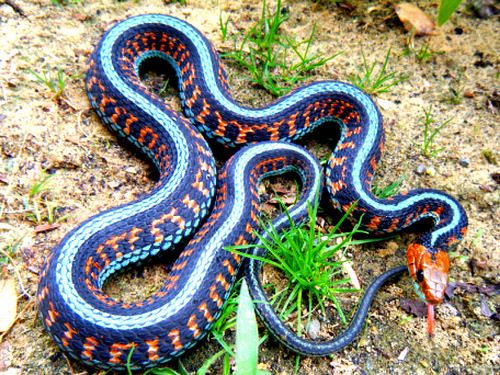
In the wild, most adult garter snakes feed preferentially on frogs and toads. In a perfect world this would make up the bulk of their diets. But in captivity, frogs and toads should almost never be used.
Frogs, toads and tadpoles are rife with parasites, and are quite likely to transmit them to your snake. It’s true that wild garter snakes eat frogs and toads all the time, but they’re (a) used to it and (b) rife with parasites themselves. Your pet garter snake won’t necessarily have the same resistance as a wild garter snake whose immune system has been hardened by constant exposure. As a result, frogs and toads shouldn’t be used as garter snake food unless the snake refuses to eat anything else.
There may also be legal restrictions on collecting amphibians where you live.
Earthworms
There are some concerns about parasite transmission with earthworms as well, and worms collected from roads, sidewalks and golf courses during rainstorms, while convenient, may contain toxins.
Pro: Preferred food in the wild for baby snakes and some species. Most garter snakes will eat them. Inexpensive.
Con: Not very nutritious; the snake needs to eat lots of them. Calcium deficient. Results in watery feces. Potential for parasites and toxins depending on where they were collected. Ribbon snakes won’t eat them. Red wigglers are toxic.
On the other hand, some species of snake will want these more than anything else, and most baby snakes will prefer earthworms as well. For many garter snakes, worms are often the one food they will reliably eat. So far, I haven’t encountered any problems that I’ve been able to attribute to earthworms.
Worms collected from your garden (“dew worms”) will be eaten with particular enthusiasm, and nightcrawlers (Lumbricus terrestris) purchased at a bait store will also suffice. Be careful with nightcrawlers, which are big and muscular: be sure to cut them into small pieces when feeding them to small snakes; they’re strong enough to crawl back out if you’re not careful! Cutting a large nightcrawler into quarters will be enough. Cut them into too-small pieces and the snake may ignore them: they expect their worm prey to twitch a little.
Cut them into too-small pieces and the snake may ignore them: they expect their worm prey to twitch a little.
For more on the difference between red wigglers and nightcrawlers, read this article.
Never use red wigglers (Eisenia foetida), which are the worms used in vermicomposting and are sometimes sold as trout bait: they are reportedly toxic to garter snakes. There is apparently another species of red worm used in vermicomposting that is fine to feed to garter snakes, but unless you’re certain which is which, it’s best to avoid vermicomposting worms, to be safe.
Worms are also deficient in calcium, though there is some debate about whether this is a cause for concern; as a precaution, if your garter’s diet is mostly worm-based, supplement it periodically with calcium. See Supplementation, below, for details.
Some garter snake species won’t normally eat earthworms, such as ribbon snakes and some western aquatic species. And sometimes finicky individuals of species that normally do eat earthworms will turn up their noses at them: I once had a melanistic Eastern Garter Snake and an Eastern Black-necked Garter Snake that never ate them.
Fish
Many keepers rely on fish because it’s very easy to find, and because it’s easier to control parasites with freezing. But there are some problems with using fish as a food source that lead me to recommend that you not use it unless you absolutely have to.
Live fish can be advantageous because some garter snakes will refuse to eat anything else. They can also be a great way to get a baby or smaller garter snake feeding, particularly if they need to see their food move (and they’re not comfortable with you wiggling food at them; see Problem Feeders, below).
But a regular diet of live feeder fish can expose your snake to several medical problems. Live fish can carry a load of internal parasites with them that can leave your snake with a persistent infection of roundworms, tapeworms or pinworms that can be difficult to treat. Symptoms of that infection can show up months after the snake ate the contaminated fish. (See Internal Parasites.)
Learn all about thiaminase.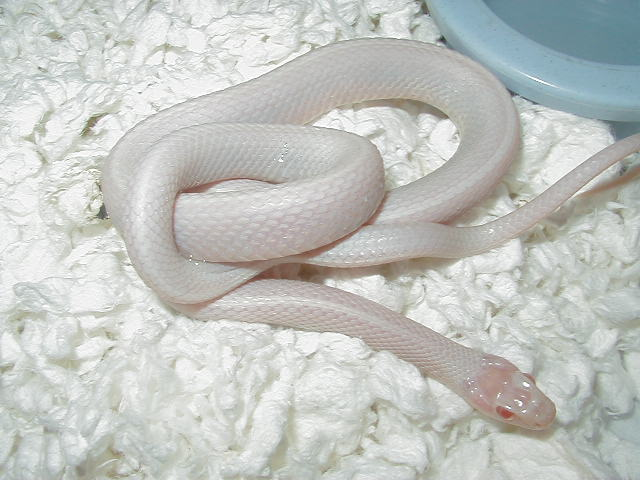
Certain kinds of live fish can pose additional risks. Goldfish should be avoided at all costs; it’s essentially a junk fish with poor nutritive value. And other species of fish contain an enzyme called thiaminase, which destroys vitamin B1 (thiamin) and gives your snake a potentially fatal vitamin deficiency (see Vitamin B1 Deficiency).
As a result, I do not recommend using live fish unless the snake will not eat anything else, and I recommend against purchasing garter snakes that will only eat live fish if you can.
Pro: Some garters will ignore other food but eat live fish. Most garters will eat fish. Fish fillet is relatively inexpensive.
Con: Live fish frequently carry parasites. Some fish carry an enzyme that leads to a serious vitamin deficiency. Goldfish are not good for garter snakes. Live fish are expensive in quantities sufficient to feed a garter snake. Not every garter snake will accept fish fillet. Fish fillet is nutritionally deficient without supplementation. Results in watery, smelly feces.
Results in watery, smelly feces.
Frozen whole fish do not present the same problems with parasites (if frozen for more than 30 days), but freezing does not destroy thiaminase. Fish fillet is very convenient, because it can be bought frozen at the supermarket, but it’s not complete nutrition. A garter that lives on strips of fish fillet misses out on the nutrients found in whole fish, so periodic calcium and vitamin supplementation will be necessary. Fish fillet can be safe to use (ocean perch, for example, is known not to contain thiaminase) but it should not be the only item in the snake’s diet. It’s fine in combination with worms or mice.
Alan Francis, a British garter snake keeper, has come up with a recipe for homemade garter snake food based on trout purchased from a nearby trout farm: whole trout are put in the blender, mixed with gelatin, set in blocks and put into the freezer. Strips are broken off as needed. I haven’t tried it yet, but it certainly sounds like a good idea: trout are a safe fish as far as thiaminase is concerned, and freezing takes care of the parasites.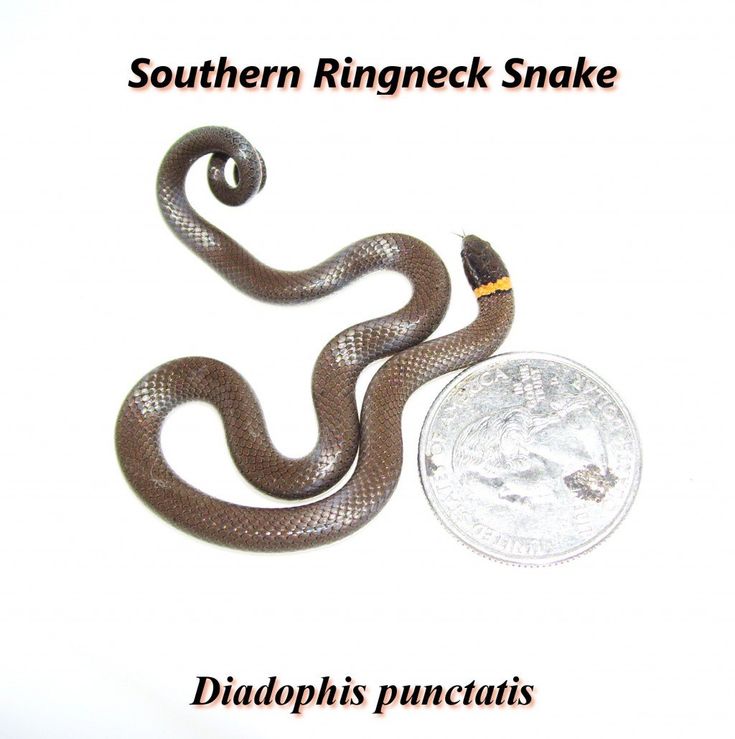 The recipe is available on his website.
The recipe is available on his website.
Mice
It may come as a surprise to some keepers that the least problematic food for a garter snake is actually mice.
Although not considered a “natural” diet in the wild, garters will eat rodents in the wild from time to time. In captivity, garters have been fed mice with no apparent ill effects for years. I’ve certainly done so: several of my garter snakes have been eating mice for a decade or more.
The main advantage of using mice is that they are more nutritious than fish or worms: they do not require supplementation and there is no risk of a thiamin deficiency. Garter snakes feeding on mice don’t need to be fed as often and they grow faster, too. Another significant advantage is that garter snake feces is a lot less watery and smelly!
There are, in fact, only two disadvantages to using mice, and neither of them have anything to do with their nutritive value. Some keepers may not be comfortable feeding mice to their snakes — in fact, they may have chosen garter snakes so that they wouldn’t have to feed mice to them.
Pro: Mice are nutritionally complete: a garter snake can eat nothing but mice and be perfectly healthy. No risk of parasites with frozen mice. Defecation is less frequent and less smelly.
Con: Young garter snakes may be too small to eat mice (try mouse parts or chopped pinky). Some garter snakes mayhave to be trained to accept mice; not all will accept them. Not all keepers want to feed mice to their snakes.
And not every garter snake can be trained to eat them; while most of my garter snakes have taken to mice without difficulty, I’ve had several stubborn individuals who wouldn’t touch them, or were simply too jumpy to be offered them.
The key thing to remember is never to use live mice. (This alone may make some keepers feel more comfortable with the idea.) Using frozen mice is safer for the snake and more humane for the mouse. You can buy them at many pet stores or directly, in bulk, from rodent breeders.
Mice come in different sizes: pinkies are newborn mice, followed by fuzzies, hoppers, jumpers and adult mice. A baby garter snake is too small to eat a pinky mouse, but can eat pinky parts or a small pinky after a few months. Adult males and young females may eat hoppers and large adult females may eat adult mice. See How Much and How Often, below, for more details.
A baby garter snake is too small to eat a pinky mouse, but can eat pinky parts or a small pinky after a few months. Adult males and young females may eat hoppers and large adult females may eat adult mice. See How Much and How Often, below, for more details.
Thaw the mouse out before offering it to your snake. This can be done at room temperature, or in a plastic bag in warm water. More direct methods are problematic: mice heated under a lamp may burst, and mice defrosted in a microwave will explode!
Training garters to eat mice is usually not difficult. Rub a pinky or fuzzy mouse with fish or earthworm to transfer the scent to the mouse. This can be quite effective, especially if the garter is already used to eating non-moving food like fish fillet.
Some garters need no scenting at all and will take mice immediately, and some baby garters will take unscented pinky parts (chopped up pinky mice, cut up when frozen) before they’re big enough to take a whole pinky! Others may stubbornly refuse them, especially if they expect their food to be moving.
Rat pups are another possibility, especially for large female garter snakes. While adult rats are obviously too large to be fed to garter snakes, pinky, fuzzy and even hopper rats can be used. Pinky rats may be useful in cases where the snake doesn’t like eating furry food: i.e., it’s big enough to eat fuzzies or hoppers, but prefers to eat pinkies.
Other Food
Garter snakes have been known to eat slugs and leeches in the wild. Slugs are high in calcium and are recommended; they’re just not as easy to get.
As for newts and salamanders, they run the same risk of parasites as frogs and toads. Some newts are also quite toxic; while some garter snake populations have evolved resistance to newt toxin, others (even from the same species) haven’t. Avoid them to be on the safe side.
A few species will eat small lizards and snakes, which should be avoided for their parasites alone, to say nothing of the discomfort many of us have with the idea of feeding reptiles to reptiles.
As with frogs and toads, collecting newts, salamanders, lizards or snakes from the wild may have legal implications.
What They Won’t Eat
Certain species will prefer some food items and avoid others. Garter snakes are a tremendously diverse group of species: some are generalists that will eat almost anything; others have a more specialized diet.
For example, ribbon snakes and some of the western aquatic species will not normally eat earthworms or slugs. Some species are better at catching live fish than others. And some are a lot harder to train to eat mice than others.
Sometimes this is because of their species. Sometimes this is because a given snake is from a range where its species has specialized on certain prey items: I’ve heard that melanistic Eastern Garter Snakes descended from Long Point, Ontario stock strongly prefer fish to earthworms, even though other Eastern Garter Snakes are much less picky; that was certainly the case for the one I kept. And sometimes it’s because the individual snake is being picky and stubborn; see the section on Problem Feeders below.
And sometimes it’s because the individual snake is being picky and stubborn; see the section on Problem Feeders below.
In general, though, garter snakes are extremely unlikely eat to crickets, mealworms or other insect larvae, no matter what the nice person at the pet store told you — they are simply not insectivores.
And all snakes are carnivores; they will not deliberately eat any vegetable matter of any kind. In fact, they are physically incapable of digesting it!
Supplements
Earthworms are deficient in calcium, and fish fillet is not nutritionally complete. If either of these items is a frequent part of your snake’s diet, you may want to consider adding vitamin and mineral supplements from time to time — once or twice per month at most.
I have used a combination of powdered calcium, vitamin B1 (as insurance against vitamin B1 deficiency) and vitamin D3 (to help metabolize the calcium). Health food stores will have these in tablet form, which you can crush; pet stores will carry powdered calcium supplements.
I’ve received a report that using calcium powder on earthworms will kill them. Lightly dust them instead of dredging them in the powder, and do it just before feeding. Either that, or use liquid calcium supplements, available at pet stores.
When supplementing, don’t overdo it. While vitamin B1 is water-soluble and, as such, theoretically impossible to overdose on, it is possible to get too much calcium and vitamin D3. Most calcium powders include vitamin D3; check the label.
Commercial Diets
A couple of commercial snake diets are on the market, one in the form of sausages and one that is specifically marketed as garter snake food. While there may not be anything conspicuously wrong with them, they are not cheap and offer no special advantages over natural food. They may be helpful for people who are squeamish with worms or mice, and for those who have trouble acquiring other food sources. But I wouldn’t use them.
How Much and How Often
How often you feed your snake depends on what you feed it, and how much depends on the size of the snake.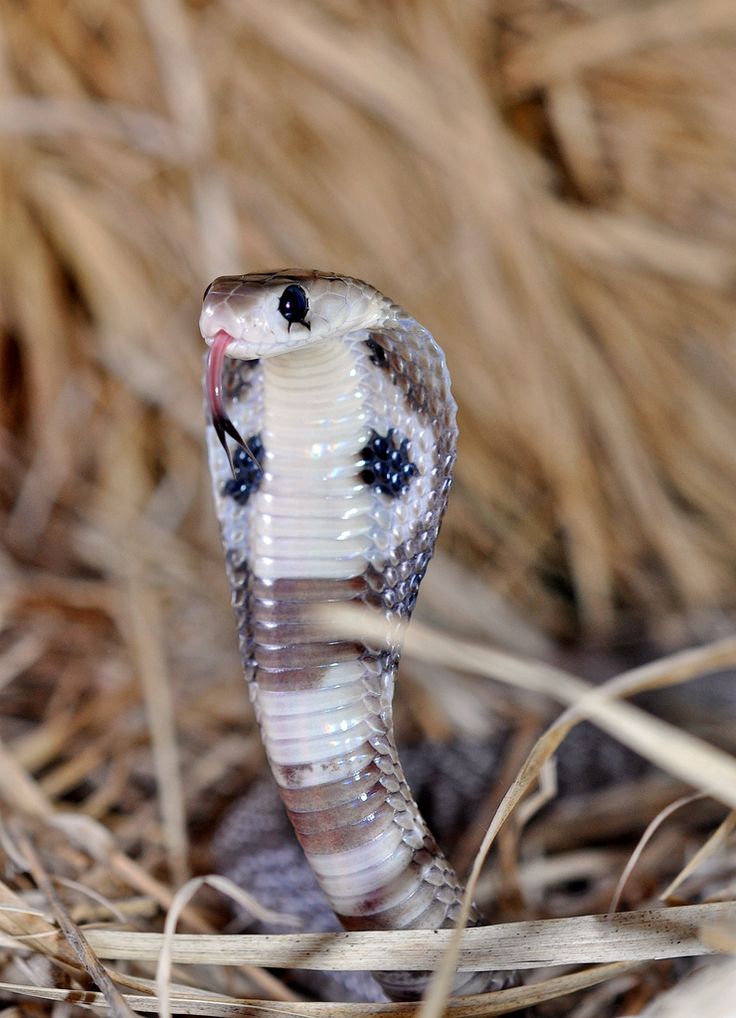 Worm eaters need to be fed more often than fish eaters, which in turn need to be fed more often than mouse eaters. Worm eaters should be fed twice weekly, fish eaters can be fed every five to six days or so, and mouse eaters every week. Very young garter snakes can eat a bit more frequently than that: they could probably eat every second day on an earthworm diet.
Worm eaters need to be fed more often than fish eaters, which in turn need to be fed more often than mouse eaters. Worm eaters should be fed twice weekly, fish eaters can be fed every five to six days or so, and mouse eaters every week. Very young garter snakes can eat a bit more frequently than that: they could probably eat every second day on an earthworm diet.
A rigid schedule is not strictly necessary, though it’s easier for the keeper to remember. Snakes that eat a varied diet can be kept on a constant schedule, despite the different recommended intervals I just mentioned. Don’t agonize too much about the schedule unless you have very young snakes; it’s very hard to starve a snake.
You should feed your snake enough to leave a visible bulge, but not so much that the snake is going to burst. A baby snake should get two or three small earthworms collected from the garden, or one-quarter to one-third of a large bait store nightcrawler, or a few feeder guppies, or one large feeder platy, or one-quarter to one-half of a pinky mouse. Smaller, more frequent meals are more easily digested than mammoth, infrequent meals. In general, baby snakes should be fed frequently.
Smaller, more frequent meals are more easily digested than mammoth, infrequent meals. In general, baby snakes should be fed frequently.
It’s hard to make fatal mistakes, and through trial and error you will figure out how much and how often based on how big the snake looks after a meal, and how fast that meal is digested. Sometimes the snake itself will tell you: if an ordinarily tame snake nips at your fingers when you reach into its cage, it’s likely that it’s just very hungry.
It is possible to overfeed your snake. Since overfeeding causes obesity and reduces the snake’s lifespan, it should be avoided. Do not feed your snake every day or it will become obese. It’s harder to overfeed on a pure earthworm diet, but easier on a pure mouse diet, because mice are more nutritious than worms. Again, it’s quite difficult to overfeed a baby garter snake.
Note that a snake’s metabolism goes up and down with the temperature: a snake kept in a house without air conditioning during a warm summer will get hungrier faster than a snake kept at cooler temperatures.
How to Do It
Okay, I’ve shown you what to feed them, how much to feed them and how often to do it — now how do you go about feeding them?
Most of the time it’s fairly straightforward. Our garter snakes’ cages have paper towels for substrate (rather than wood chips or bark), and they all eat frozen/thawed mice, so all we do is drop the mouse into the cage. It usually doesn’t take the snake very long to find it and eat it, but it depends on the snake: our Wandering Garter Snake is pretty instantaneous; our Checkered Garter Snakes need more time.
If you’re using a different kind of cage bedding, you’ll want to ensure that it doesn’t get stuck to the food. I wouldn’t drop earthworms into a cage full of wood chips, for example, because I’d worry that the wood chips would get stuck to the worm and be swallowed by the snake. Snakes don’t digest plant fibres well at all.
If I were feeding worms, dead whole fish or fish fillet, I’d use a small plate or dish.
Whether whole or in fillet, frozen fish should be thawed and not cooked.
Live fish would be offered in a small, water-filled bowl from which the snakes could catch fish at their leisure.
Some garter snakes need their prey to move. Garter snakes are very visual, more so than many other snakes, and respond well to motion. This is not a problem with live fish or live worms, but worm pieces (if the snake is very small), fish fillet or frozen/thawed mice may hold no interest for them. In that case you may have to offer the food on tongs, hemostats or tweezers, wiggling it around to simulate motion and stimulate the snake. This is called tease-feeding. (You don’t want to hold the food in your fingers. That’s a good way to get bitten: snakes sometimes miss.)
If you keep two or more snakes in the same cage, you may have to feed them separately in order to prevent food fights and other accidents. See the section on keeping more than one snake in the same cage to learn how to deal with it.
Problem Feeders
In my experience, garter snakes can be some of the most reliable and aggressive feeders of all captive snakes. But there are always a few exceptions. Here are some possible reasons why your garter snake may not want to eat.
The first and most likely possibility is that you’re offering the snake something it doesn’t want to eat or doesn’t recognize as food. Some garter snakes expect their prey to move; as a result, fish pieces, thawed pinkies, and earthworm pieces cut too small for them to twitch may be ignored. You may have to experiment: try larger pieces of worms (big enough to still be twitching) or smaller, whole worms; wiggle the food in front of the snake with a pair of tweezers; offer something else. Use live fish only as a last resort, but sometimes a garter snake needs a few live meals before it can be weaned onto something better.
You might also be offering it the wrong food. Remember that some species don’t eat certain things — ribbon snakes don’t eat worms, for example. Check the dietary preferences of your snake’s species.
Check the dietary preferences of your snake’s species.
Sometimes garter snakes lose their appetite when winter comes. It may be a sign that you should hibernate (or, to be more technically correct, brumate) your snake. Artificially brumating a snake is a lot less difficult than you might think; see Hibernation.
Read about the garter snake reset button.
But sometimes I’ve found that garter snakes don’t go off their feed altogether, they just get finickier. For example, I’ve had a few snakes that had been converted to mice suddenly refuse to eat them when October rolled around, but they did eat when they were offered worms or fish. After a while they began taking mice again. So try feeding your snake something else. Earthworms are frequently a reliable fall-back choice.
Another possibility is that you have a male garter snake and it’s mating season. When he was introduced to his mate, my male Red-sided Garter Snake refused to eat for two months; I might have gotten a few worms into him during that time, at best. He was completely preoccupied with mating.
He was completely preoccupied with mating.
Finally, the snake might be too nervous to eat — especially with you watching it. There are some things you might want to try. If the snake has just arrived, give it at least three days before offering it any food — give it time to adjust to its new cage. Leave the snake alone while feeding: it might be too terrified of you to pay attention to the fact that there’s a tasty morsel in front of its nose. And if it’s being housed with another snake, consider separating them: it’s possible that the other snake’s presence is stressful.
The worst-case scenario is when a snake needs its food to move but cannot eat in front of you — in other words, you can’t tease-feed it. In that case you have little choice but to feed it live food (fish and earthworms) and hope that it settles down enough at some point that you can switch it to something healthier and safer.
Last updated:
If you found this website helpful, please consider making a donation toward my web hosting costs.
Garter snake, or common garter snake | zoo-ekzo.com
Gifting snake ordinary, or gifs already ( Thamnophis Sirtalis )
Grade
detachment-scaly
Genders 9000 9000 9000 species
Quite a large snake - body length up to 1.3 meters.
The body is very slender, long. The head is slightly expanded. The pupil is round. The main tone of the color is cream or light gray. Wide dark stripes run along the sides of the ridge. On a dark background, a pattern of longitudinal red stripes or spots is expressed. On the sides of the wide stripes, narrow, one or two black stripes may pass. Red or black spots are often located between the stripes. nine0009
Habitat
Lives in the USA, Mexico and southern Canada.
Inhabits damp habitats, mainly along the banks of water bodies.
Lifestyle
Lead a daily lifestyle.
Garter snakes, due to their small size, heat up and cool down quickly. Like most reptiles, garter snakes bask in the sun, they also tolerate cool (up to 16 ° C) and high (34 ° C) temperatures well. Snakes tend to maintain their body temperature within 22-32 °C. nine0009
Like most reptiles, garter snakes bask in the sun, they also tolerate cool (up to 16 ° C) and high (34 ° C) temperatures well. Snakes tend to maintain their body temperature within 22-32 °C. nine0009
Most garter snakes hibernate during the cold season.
When spring comes, overwintered snakes need two to three weeks to warm up. At this time, the snakes are inactive, occasionally making forays out of the hole, but returning at night to avoid the still cold night temperatures.
The diet of snakes includes both traditional frogs and their tadpoles, as well as toads, newts, salamanders, fish, lizards, mice, shrews, small birds and even snails, earthworms, spiders and various insects. nine0009
Reproduction
As early as 8 to 12 months of age, garters can bear offspring, giving birth (not laying eggs) from 8 to 62 live cubs. Babies have a length of 130 to 220 mm and a weight of about 2 g. Pregnancy lasts 67-78 days, while the female actively feeds and quickly gains weight.
Captive keeping
The moderate size of the snake makes it possible to keep it even in a small terrarium. A terrarium with a size of 560X560X550 mm is suitable for their maintenance. Temperatures in the terrarium are 26°C in a cool corner and 38°C under a lamp. The duration of daylight hours is 12 hours. At night, the light and heating are turned off. nine0009
Snakes are fed once a week at the rate of 30-50 g per individual. Water in the drinker should be constantly. Garters eat almost everything: earthworms, false horse leeches, small crayfish, river and sea fish, tadpoles, newts, salamanders, frogs, toads, small rodents and birds, meat.
I stimulate the reproduction of garters by lowering the temperature to 4-12 °C. In spring or autumn, snakes can be taken out in small plexiglass jars to the balcony. Three weeks before the “wintering”, they stop feeding the animals, turn off the heating and keep the snakes at room temperature (18-20 ° C), then cool them for 10-14 days . You can use compartments for vegetables and fruits of household refrigerators. nine0009
You can use compartments for vegetables and fruits of household refrigerators. nine0009
Males are the first to come out of the winter and give them time to get used to the heated terrarium. Then the female is planted. Mating usually occurs after 5-10 minutes.
It should be noted that mating in garter snakes is often observed without stimulation, however, overwintered parents give stronger and larger offspring. The best starter food is small fish (guppies, platies, zebrafish, etc.)
The whole truth about snake sex: it is not what we thought
- Sandrine Serstimont
- BBC Earth
Sign up for our 'Context' newsletter to help you understand what's going on.
Photo by Sven Zacek/naturepl.com
Scientists are used to thinking that male snakes play a dominant role in sexual intercourse, and females are mostly passive, but how wrong they were!
When Jesús Rivas took the female anaconda out of the mating ball of snakes, he was in for a surprise.
The swollen body of the anaconda indicated that she was extremely full, and Rivas believed that she was about to burp - snakes often burp some of the food if they have eaten too much or are stressed. nine0009
And what did Rivas see? Instead of the usual prey - a rat or other rodent - the tail of another snake appeared from the anaconda's mouth.
"It was also an anaconda," says Rivas, a herpetologist from Las Vegas. "And judging by the sexes, it was a male."
- Who has the largest spermatozoa on the planet
- Do animals enjoy sex?
- Octopus sex. How not to get eaten by your girlfriend
- Wolf spiders eat their older females
A female anaconda swallowed one of her recent sexual partners, a sexual behavior known as "sexual cannibalism".
And this astounding case has only added evidence to a growing body of evidence that we have misunderstood how snakes have sexual intercourse.
Photo copyright, Franco Banfi/naturepl.com
Photo caption,Green (giant) anaconda (Eunectes murinus)
Among anacondas, only females engage in sexual cannibalism.
Previously, scientists believed that female snakes occupy a subordinate position during courtship and mating, but now it is clear that their role is very significant and even dominant.
Rivas suggests that the misconception stemmed from old research done by male scientists. Played a role, so to speak, gender solidarity.
Female snakes are physically large and powerful, so it's really not surprising that they can overcome and even eat a male. In many animals, the picture is reversed - it is the males that are larger, but in the case of snakes, everything is not so. nine0009
Female anacondas are on average 4.7 times larger than males. Among land vertebrates, this is the most impressive difference between the sexes.
- Move like a snake: it means - inexplicably fast
- Folk remedy for snakebite - another myth?
- Eating one's own flesh. Who is doing this?
The reason that males are often larger than females is that it helps them to win the fight for the female and control the territory, driving off rivals. And this is exactly the case in lizards, birds and mammals. nine0009
But the behavior of male snakes destroys this stereotype. They don't care about territorial control, and during courtship, they just push the rival away and deftly use their tail to get to the female's genitals. So for a male snake it is not at all important to be big.
Why do females need large forms? Large size improves fertility, and the offspring are larger, which increases the chances of survival. Males seem to understand this, preferring to court larger females. nine0009
But how do they make their choice? Snakes do not have very good eyesight, and it is not yet clear how a male from afar can understand how attractive a female is.
Photo credit, Tony Phelps/naturepl.com
Photo caption,A male common viper (Vipera berus) guards a female from other males. When a female snake comes out of hibernation and sheds her skin, she secretes pheromones and thereby attracts males to her. "The males just go crazy," Rivas testifies. nine0009
These pheromones seem to carry information about what the female looks like. Michael Lemaster of Western Oregon University has found evidence that the scent given off by a female garter snake can convey information about her physical size.
And although males pay attention to smaller females, as soon as a large snake is nearby, they switch to it.
Another aspect of the sex life of snakes that we have been misled about is mating. nine0009
The author of the photo, Franco Banfi/naturepl.com
Photo caption,Green (giant) anaconda (Eunectes murinus)
It was believed that the norm for snakes is polygyny, when one male has sexual relations with several females. But even here everything was not so simple.
But even here everything was not so simple.
Absolutely common thing - when several males care for one female. On the island of Borneo, for example, it was possible to photograph a female paradise decorated snake, which entered into a relationship with four males.
The males relentlessly followed the female as a detachment of her admirers for 30 minutes. According to the researchers, during this sex journey, they competed for the best position for sexual intercourse.
Photo credit, Tim Laman/naturepl.com
Photo caption,Paradise ornamented snake (Chrysopelea paradisi)
Skip the Podcast and continue reading.
Podcast
What was that?
We quickly, simply and clearly explain what happened, why it's important and what's next. nine0009
episodes
End of Story Podcast
Usually, the female giant anaconda lies quietly in the mud or shallow water while the males try to find her. Sometimes a dozen promising partners come to meet each other, wrapping themselves around the female - such "orgies" last up to a month.
Sometimes a dozen promising partners come to meet each other, wrapping themselves around the female - such "orgies" last up to a month.
Rivas recalls watching a male anaconda doggedly pursue a large female, ignoring any other opportunity to mate, and eventually had sexual intercourse with her. "It was like true love," says Rivas. nine0009
With garter snakes, courtship can take even more extreme forms. In the Canadian province of Manitoba, in the area between Lakes Winnipeg and Manitoba, one can witness how one female is pursued by up to a hundred males, from which a large mating ball is formed.
Often in the crevices one can observe several such balls with thousands of snakes at once. True, this does not happen everywhere with garter snakes. You won't see this in the continental United States, Rivas says. It is not very clear why, but it seems that the environment and geography strongly influence the behavior of snakes. nine0009
The problem with these mating cups, Rivas says, is that it's very difficult for scientists to determine which males end up producing offspring. One thing is clear - since there are many males in such "orgies", the female must make a choice.
One thing is clear - since there are many males in such "orgies", the female must make a choice.
Image copyright Francois Savigny/naturepl.com
Image captionAnaconda mating ball (Eunectes murinus)
"In the end, it's the female who decides when to open her cloaca to the male," says Lemaster, who studies garter snakes . Females use genital contraction to control the duration of sexual intercourse and may interrupt it if they consider that the male is not coping with his duties. nine0009
It is still not completely clear what exactly females are guided by when choosing one or another male. Scientists suggest that after all, either the strongest or the most persistent is selected to ensure healthier offspring.
However, another element may play a role in the process of "female" choice. According to Rivas, females use their sense of touch to distinguish between males. To understand how this happens, video filming of processes within the mating group can help.
In any case, it is clear that females do not necessarily choose only one "groom". Often they have sexual intercourse with several males. And contrary to previous beliefs, males usually stay with one female.
Photo copyright, Huw Cordey/naturepl.com
Photo caption,Garter snakes (Thamnophis sirtalis parietalis) in mating season
"It takes a lot of effort for a male to find and win over a female," explains Rivas. In his opinion, polyandry (when each of the females has sexual intercourse with several males) is inherited in snakes. nine0009
How did it come about? One suggestion is that sex with multiple males helps the female build up a supply of seminal fluid that she can use to feed.
But Rivas still believes that sexual intercourse with many males, the competition of different sperm provide some guarantee of healthier offspring.
Females can store sperm in the reproductive tract for months or even years, and it remains competitive even when fresh. nine0009
nine0009
Photo copyright, Huw Cordey/naturepl.com
Photo caption,Garter snakes (Thamnophis sirtalis parietalis)
Does all this mean that the role of males in mating snakes is very limited and comes down to a very specific duty?
Female garter snakes that have just had sexual intercourse secrete a special pheromone that lets the males know: don't waste time, you are no longer interested in me.
However, some males are also quite active. Let's say males of the same garter snake secrete some substance that blocks the female's genital tract after intercourse. This so-called copulatory plug is apparently a way to prevent a female from having intercourse with other males. nine0009
These plugs are not 100 percent effective, they often just fall out. But they may have another function - they may be a store of sperm, which is gradually released into the body of the female, as the cork dissolves.
The fact that, say, a male anaconda tries to stay longer near his "lover" can be explained by the fact that he is trying to be the last one to have sexual intercourse with her. This increases the chances that it is his sperm that will win in the fight for offspring. nine0009
This increases the chances that it is his sperm that will win in the fight for offspring. nine0009
However, returning to the beginning of our story, it should be noted that staying too long with a friend is also dangerous - and even deadly: she can just eat.
Photo copyright, Sven Zacek/naturepl.com
Photo caption,Common snakes (Natrix natrix) - male and female
it or not. "It would be interesting to know if there is something about a particular male that makes him more vulnerable to that outcome," Rivas muses. nine0009
Sexual cannibalism helps female anacondas get additional nutrients, which is very useful, considering that during pregnancy they starve for seven months.
There are still many mysteries in the reproductive behavior of snakes. Partly because snakes themselves are mysterious creatures and lead a lifestyle hidden from human eyes.
But from what we know, we can conclude that the mating behavior of snakes is very similar to spiders.




